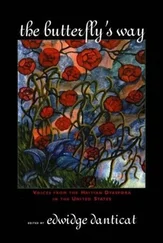Kendric Babcock - The Scandinavian Element in the United States
Здесь есть возможность читать онлайн «Kendric Babcock - The Scandinavian Element in the United States» — ознакомительный отрывок электронной книги совершенно бесплатно, а после прочтения отрывка купить полную версию. В некоторых случаях можно слушать аудио, скачать через торрент в формате fb2 и присутствует краткое содержание. Жанр: foreign_antique, foreign_prose, на английском языке. Описание произведения, (предисловие) а так же отзывы посетителей доступны на портале библиотеки ЛибКат.
- Название:The Scandinavian Element in the United States
- Автор:
- Жанр:
- Год:неизвестен
- ISBN:нет данных
- Рейтинг книги:5 / 5. Голосов: 1
-
Избранное:Добавить в избранное
- Отзывы:
-
Ваша оценка:
- 100
- 1
- 2
- 3
- 4
- 5
The Scandinavian Element in the United States: краткое содержание, описание и аннотация
Предлагаем к чтению аннотацию, описание, краткое содержание или предисловие (зависит от того, что написал сам автор книги «The Scandinavian Element in the United States»). Если вы не нашли необходимую информацию о книге — напишите в комментариях, мы постараемся отыскать её.
The Scandinavian Element in the United States — читать онлайн ознакомительный отрывок
Ниже представлен текст книги, разбитый по страницам. Система сохранения места последней прочитанной страницы, позволяет с удобством читать онлайн бесплатно книгу «The Scandinavian Element in the United States», без необходимости каждый раз заново искать на чём Вы остановились. Поставьте закладку, и сможете в любой момент перейти на страницу, на которой закончили чтение.
Интервал:
Закладка:
Janson was repeatedly arrested and imprisoned; his followers were subjected to the same treatment; and finally, a price was put upon the head of the pestilent arch-heretic. It was these persecutions, supplemented by letters from a Swedish immigrant in America, which turned the thoughts of the Jansonists towards the United States. So it happened that when Janson was rescued by his friends from the crown officer who had him in custody, he was spirited off over the mountains to Norway, and thence to Copenhagen, where he embarked for America. In New York he met Olof Olson, the “advance agent,” who was sent out by the new sect in 1845 to spy out the better country where there was no established church, no persecution for conscience’s sake, and no aristocracy. 122 122 Mikkelsen, The Bishop Hill Colony , 24.
Olson met Olof Hedström on landing in New York, and by him was directed to his brother Jonas in Illinois, who gave the new-comer a hospitable reception, and assistance in a prospecting tour of Illinois, Wisconsin, and Iowa. Olson decided on Illinois as the State in which to plant the proposed colony. On the arrival of Eric Janson in 1846, the exact site in Henry County was selected, and the name Bishop Hill given it after Biskopskulla, Janson’s birthplace in Sweden. 123 123 Johnson and Peterson, Svenskarne i Illinois , 26; History of Henry County, Illinois .
Janson appointed leaders for the would-be emigrants, – captains of tens and of hundreds – before he left Sweden, and under their guidance several parties made their way to Henry County in 1846, usually going by way of New York, the Erie Canal, and the Great Lakes. Nearly 1100 persons were ready to emigrate, but, like the early Norwegians, they experienced great difficulty in securing passage, being compelled to go in companies of fifty or one hundred in freight vessels, usually loaded with iron. 124 124 Swainson in Scandinavia , Jan., 1885.
The greater number sailed from Gefle, though some went from Gothenburg and some from Stockholm. 125 125 Mikkelsen, The Bishop Hill Colony , 28.
The greater part of these emigrating Jansonists were poor peasants, unable from their own means to bear for themselves and their families the great expense of the long journey from Helsingland to Illinois. In addition to other difficulties some of them had to purchase release from military service. It was to solve these problems of poverty and expense, that Janson followed the example of other leaders of religious sects, even of the early Christian leaders, and instituted community of goods for the whole sect. The pretext seems to have been religious, but from this distance it is clear that the motive of the leader was essentially economic and philanthropic. Nothing could better attest the tremendous earnestness of these uneducated enthusiasts than their implicit obedience to the commands of Eric Janson, for they gave all they had into his care and discretion – their property, their families, and themselves. The amounts contributed to the common treasury after the sale of individual property varied greatly, of course. Some turned in almost nothing, while others gave sums reaching as high as 24,000 kroner, or about $6,500. 126 126 Johnson and Peterson, Svenskarne i Illinois , 28.
The methods and practices of the sect are revealed, in unsympathetic and perhaps exaggerated fashion, in a printed letter, dated at New York, May 23, 1847, written by one who found himself unequal to the high demands of the new faith and its self-appointed apostle. 127 127 This account is contained in a small pamphlet, signed O. S., which was unearthed in the Royal Library in Stockholm while the author was searching there in 1890 for material on Swedish emigration.
This backslider, who emigrated with the rest, tells a story that sounds strangely like accounts of the action of more recent sects and their “divinely ordained” prophets and priestesses. Janson and all his works are denounced in very bitter terms. After a five-months voyage not more than fifty out of three hundred, says the writer of the letter, were well, and many were suffering from scurvy; but Janson’s “prophets” came aboard and “tried to work miracles and heal the sick,” even damning those who did not believe they were well when they were raised up. He further says that the Jansonists were warned in Illinois to use medicine or the government would take a hand in their affairs. The letter closes with a statement that more than a hundred had already left the society.
The colony had a homestead at the outset, for Janson and his co-workers purchased for $2000 a tract of 750 acres, part of which was under cultivation. By the end of 1846, new recruits brought the number in the settlement up to about 400 souls, who were accommodated in log-houses, sod-houses, dug-outs, and tents. A church was improvised out of logs and canvas, and services were held daily at half past five in the morning and in the evening. In spite of the community of goods, the first year with its crowding brought much suffering; the funds of the society were depleted by the expenses of the great journey for so many people, and by the expenditures for land.
With the coming of spring in 1847, the settlement became a hive of industry. Adobe bricks were made, a new saw-mill was erected, better houses were built, and more land was bought to accommodate the new arrivals. By 1850 the community owned fourteen hundred acres of land, nearly free from debt. The religious or economic attractiveness of the colony is evidenced by the fact that its population in 1851 reached the considerable figure of about eleven hundred, 128 128 Swainson puts the number of seceders at 250, and asserts that they were drawn off by Jonas Hedström, the Methodist. Scandinavia , Jan. 1885. Mikkelsen, The Bishop Hill Colony , 33, 35, 37.
nearly one-third of the total population of Henry County, notwithstanding a schism in 1848 whose centrifugal force drove upwards of 200 from the fold, and notwithstanding the epidemic of cholera in 1849 which claimed 150 victims. Among these hundreds were representatives of almost every province in Sweden.
The communistic principle worked well, at least in the first years, in spite of the severity of the religious discipline. The land was thoroughly cultivated. The growing of flax became a prominent factor in the prosperity of the colony, and from this crop were made linen and carpeting which found a ready market, the product of the looms reaching 30,579 yards in 1851. 129 129 Johnson and Peterson, Svenskarne i Illinois , 335.
The death of Eric Janson by the hands of a Swedish adventurer, John Root (or Rooth), with whom he had a quarrel of long standing, removed the prophet and builder of this New Jerusalem, but did not seriously interrupt its development. In fact it might be said to have been a benefit to the colony, for Janson was not a careful and skilful man of business, and he had involved the community in debt. To relieve this pressure of obligation, Jonas Olson, Janson’s right-hand man, was sent out with eight others, in March, 1851, to seek a fortune in the California gold fields. 130 130 Ibid. , 39.
The period of which this chapter treats ends with 1850; but inasmuch as that year marks no break in the history of Bishop Hill, it will be well here to finish the sketch of the development of that colony. On learning of the death of Janson, Olson returned at once from California and became the head of the colony after February, 1851. Improvements immediately followed; the government, which had been autocratic or theoretically theocratic, became more and more democratic under Olson. Finally, as a completion of this broadening evolution, an act of the Illinois legislature of 1853 incorporated the Bishop Hill Colony, and vested the government in a board of seven trustees who were to hold for life or during good behavior, their successors to be elected by the community. 131 131 Act of January 17, 1853. The Charter and Bylaws are reprinted in Mikkelsen, The Bishop Hill Colony , 73 ff. (App.).
Интервал:
Закладка:
Похожие книги на «The Scandinavian Element in the United States»
Представляем Вашему вниманию похожие книги на «The Scandinavian Element in the United States» списком для выбора. Мы отобрали схожую по названию и смыслу литературу в надежде предоставить читателям больше вариантов отыскать новые, интересные, ещё непрочитанные произведения.
Обсуждение, отзывы о книге «The Scandinavian Element in the United States» и просто собственные мнения читателей. Оставьте ваши комментарии, напишите, что Вы думаете о произведении, его смысле или главных героях. Укажите что конкретно понравилось, а что нет, и почему Вы так считаете.












